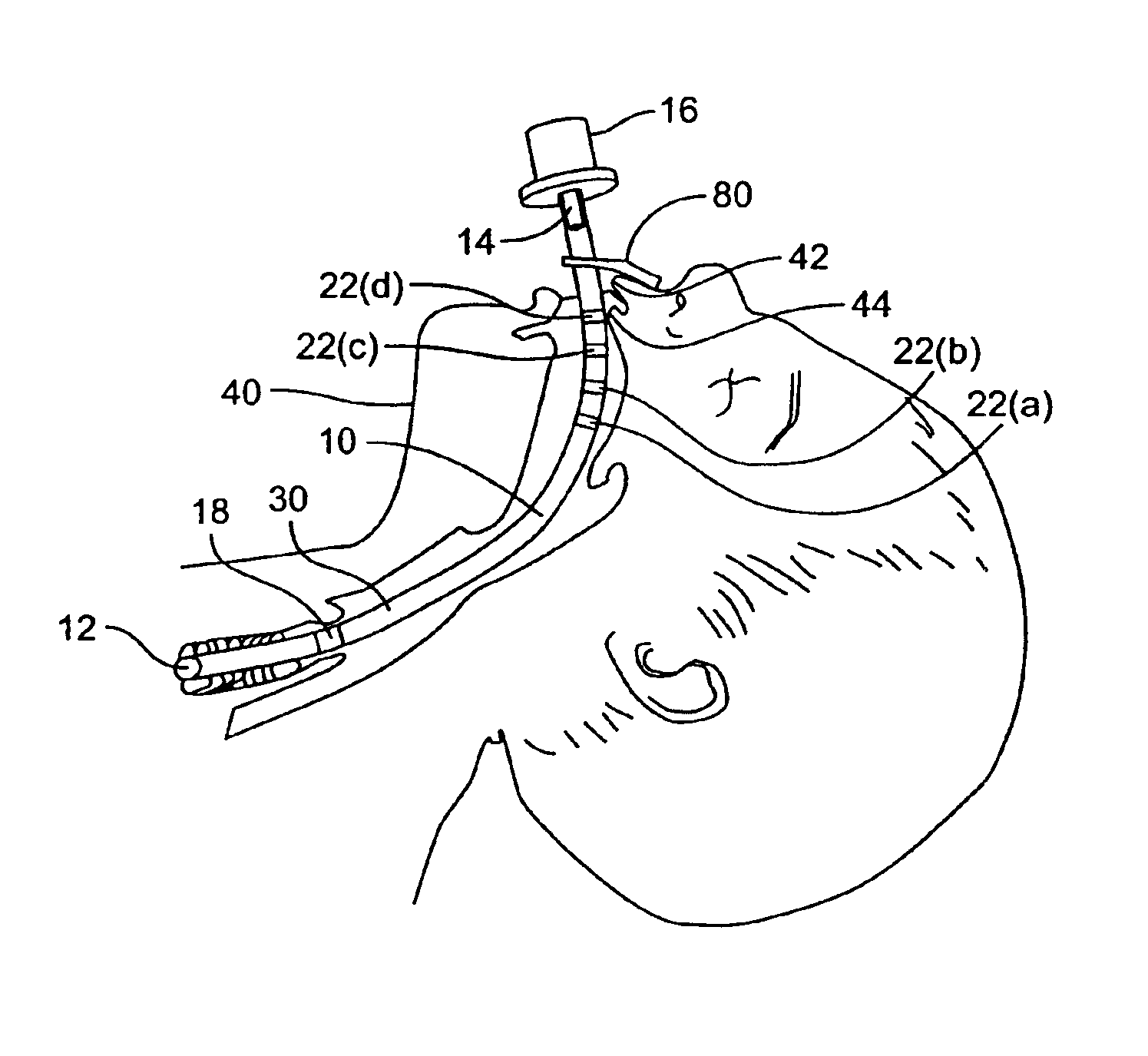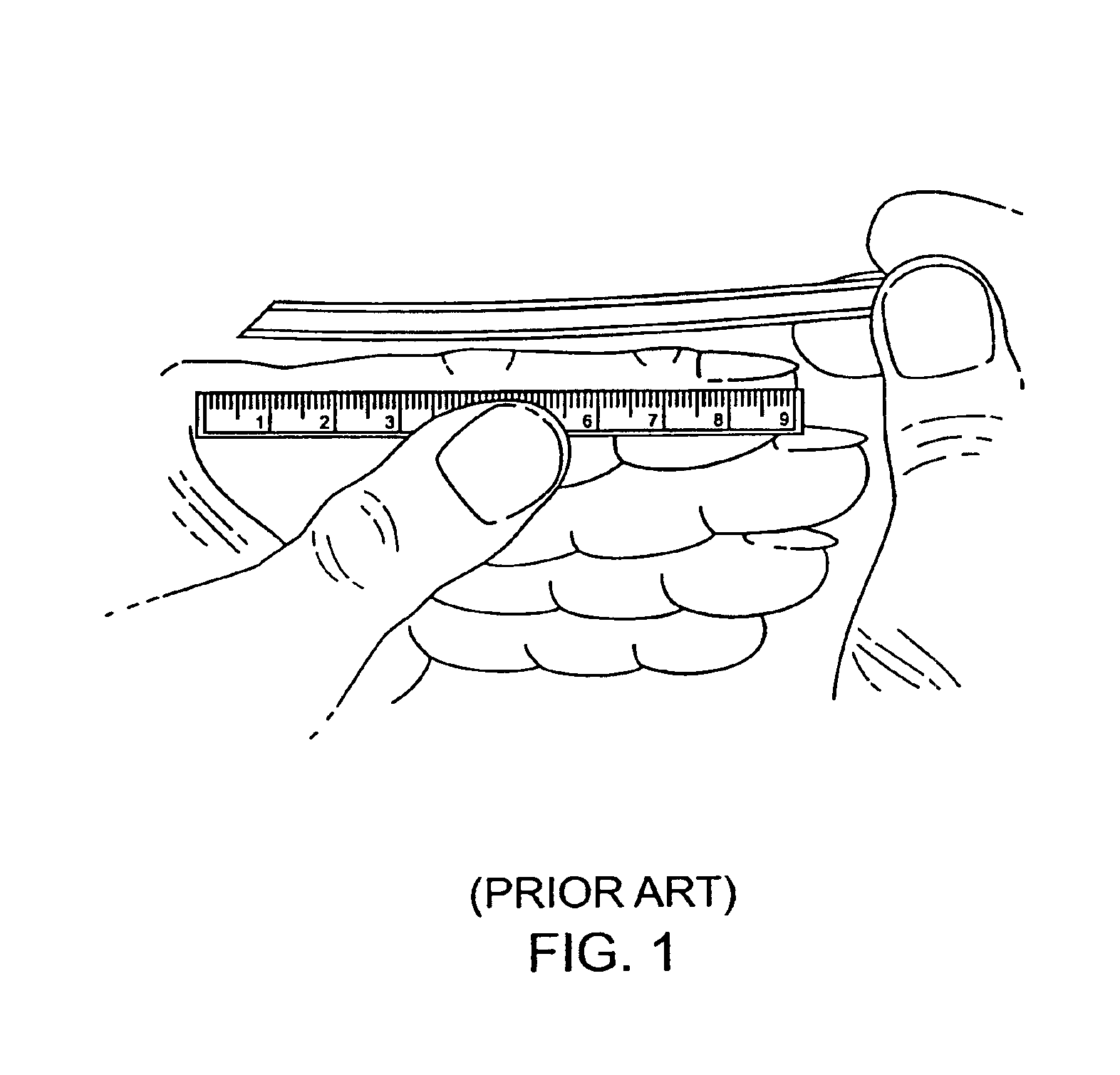Endotracheal tube
- Summary
- Abstract
- Description
- Claims
- Application Information
AI Technical Summary
Benefits of technology
Problems solved by technology
Method used
Image
Examples
example
[0054]The present inventors performed two studies to ascertain the incidence of RMSBI in intubated neonates. Specifically, a retrospective study and a prospective study were performed.
Retrospective Study
[0055]A first phase of this study retrospectively reviewed the incidence of RMSBI at a particular medical center. This first phase was conducted before evaluating the new endotracheal tube design according to embodiments of the invention. The retrospective review was for the years 1996, 1997, and 1998. A database identified all intubated infants. Charts of these patients were abstracted for demographic information and reports of all chest radiographs. The protocol in the NICU (neonatal intensive care unit) for performing chest radiographs kept the head in the midline position with the arms extended beside the head. During the 1996 through 1998 period, the endotracheal tube had the same localizing marks as standard neonatal endotracheal tube in use today. This endotracheal tube was us...
PUM
 Login to View More
Login to View More Abstract
Description
Claims
Application Information
 Login to View More
Login to View More - R&D
- Intellectual Property
- Life Sciences
- Materials
- Tech Scout
- Unparalleled Data Quality
- Higher Quality Content
- 60% Fewer Hallucinations
Browse by: Latest US Patents, China's latest patents, Technical Efficacy Thesaurus, Application Domain, Technology Topic, Popular Technical Reports.
© 2025 PatSnap. All rights reserved.Legal|Privacy policy|Modern Slavery Act Transparency Statement|Sitemap|About US| Contact US: help@patsnap.com



